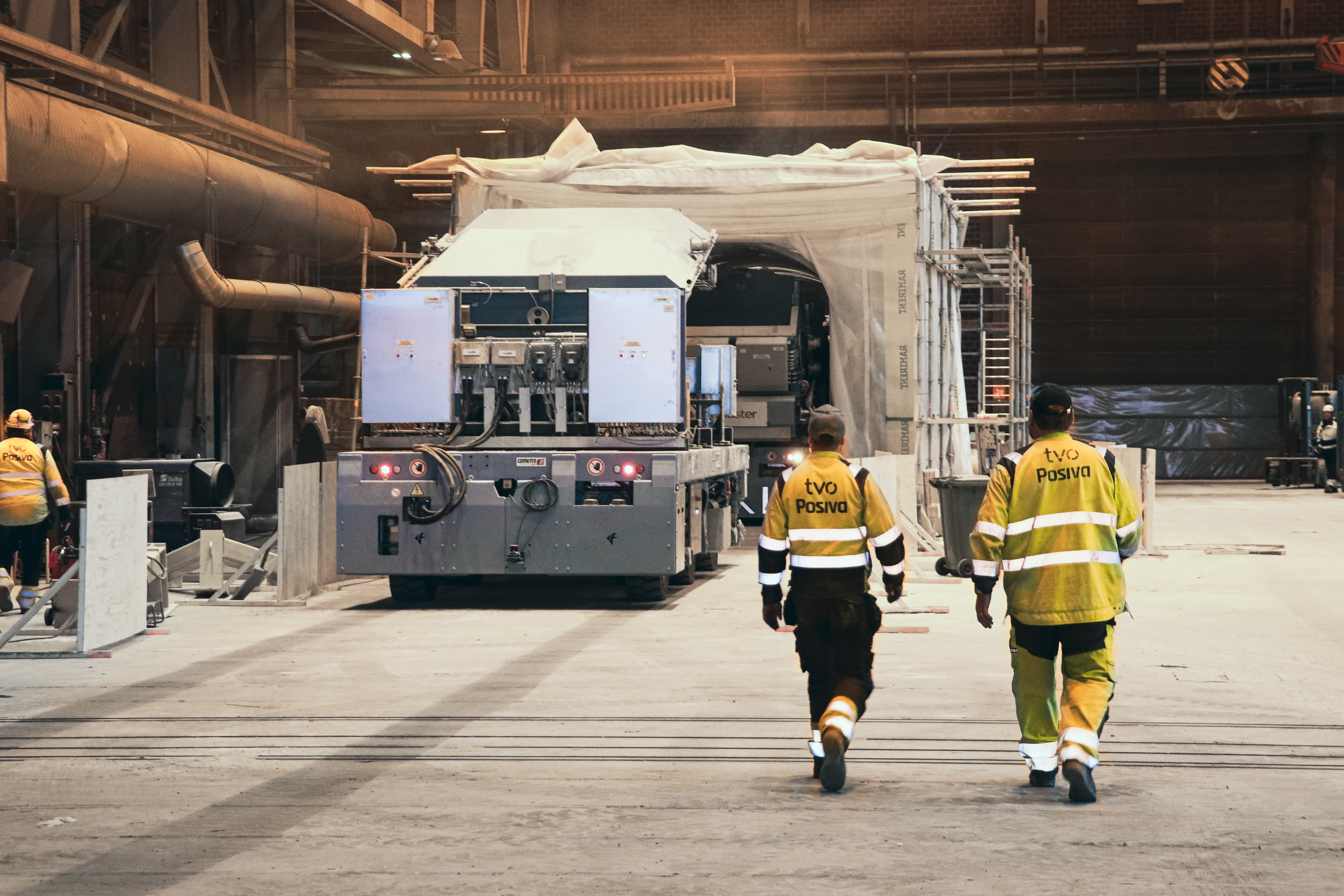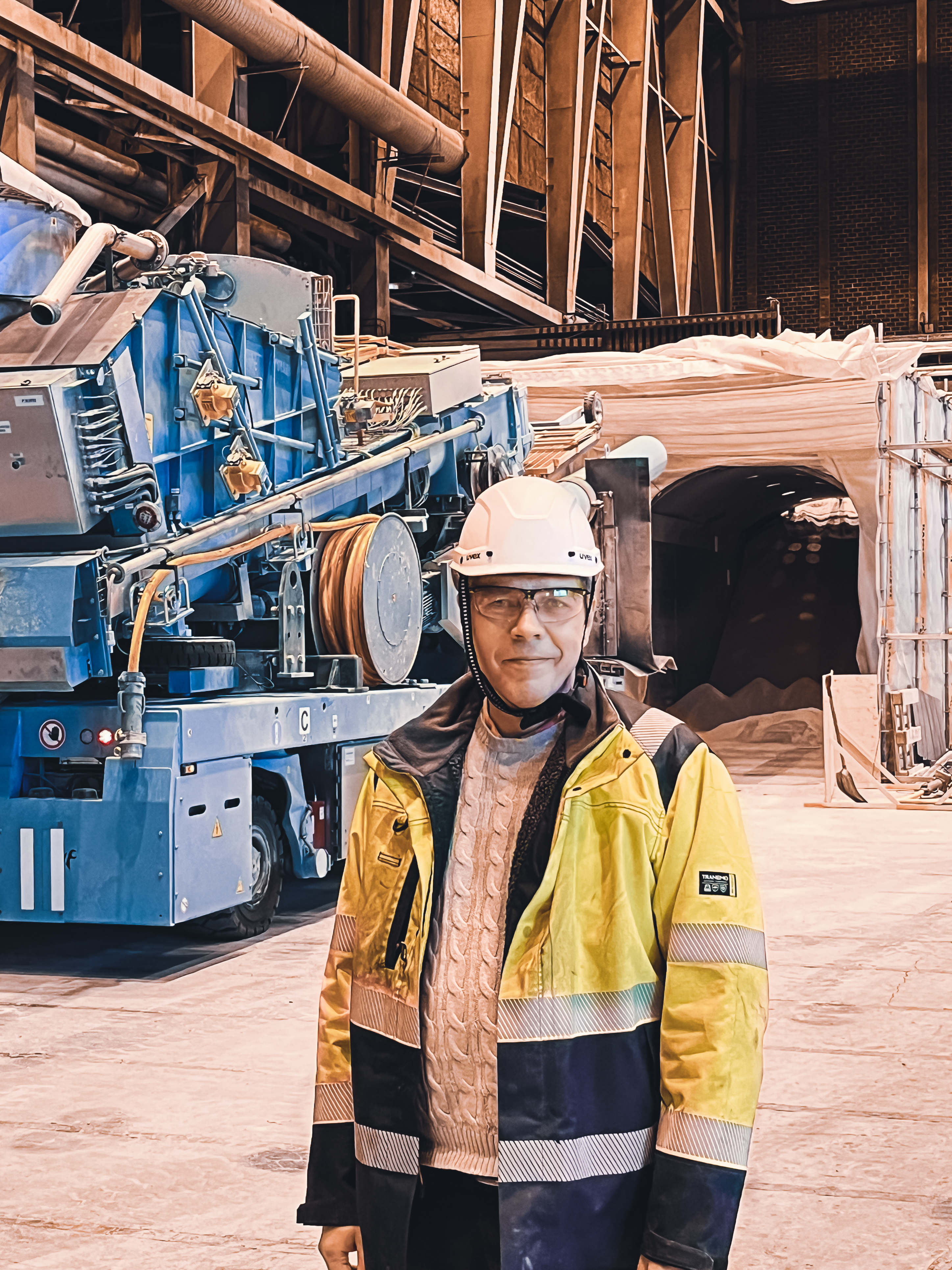Above-ground tests related to tunnel backfilling conducted successfully
Another significant milestone for Posiva’s final disposal operation was passed. In the industrial hall rented by Posiva for the testing of final disposal production equipment, a test designed to verify the successful backfilling of the final disposal deposition tunnels was brought to a conclusion. The successful outcome of the test meant that the tested tunnel backfilling equipment is now ready to be transferred to ONKALO®.

The atmosphere was expectant during the morning hours. Some 20 people were present to carry out and monitor the test, from both Posiva and subcontractors. They were all aware of the significance of the test, which was already the fourth in the test sequence connected with tunnel backfilling – and if successful, would also be the last one.
Conditions simulating ONKALO had been created in the industrial hall and the criteria for a successful outcome included not only the achievement of specifed measurement results but also the seamless co-functioning of several different pieces of equipment.
Tunnel backfilling comes toward end of total process
- Actually, five separate sets of equipment were included in the test. There is the unloading station, and then the backfill transfer vehicle and the backfill installation machine as well as the AGV platforms (Automated Guided Vehicle) for both of them, Eero Väisänen lists the equipment. His role as the Project Manager for Equipment Integration can well be described as that of the conductor of the equipment orchestra.
The common characteristic of the different machines and equipment is that they are all needed for the final disposal tunnel backfilling. In other words, at the final disposal process phase where the spent fuel encapsulated in the final disposal canister has already been emplaced in the deposition hole and surrounded with buffer blocks.
- In the multibarrier principle, tunnel backfill constitutes a migration barrier at the rear end of the engineered barrier concept, Väisänen says.
The tunnel backfill material used in final disposal is bentonite clay and the same material was also used in the tests. Bentonite has been selected as the backfill material due to its properties. It has a sufficient dry density to prevent microbial survival and activity.
Test results for dust issues exceeded expectations
To be precise, this test was the fourth one conducted on the tunnel backfill system, and the main objective of the test was to achieve the specified tunnel backfill requirements.
- All requirements were fulfilled in the implementation of the test and in fact, ahead of schedule. We had reserved more days for the test, but they were not needed, Väisänen is happy to say.
Actually the outcome of the tests even slightly exceeded the expectations.
- Good progress was also made in the tests with respect to dust control. A health and safety expert from TVO measured the air quality and the results were extremely good, he boasts.
As said, since the tests have already been completed, the equipment could in theory be transferred deep inside the Olkiluoto bedrock at once, but according to Väisänen, this is not planned to take place until June.
- The time before that will be taken advantage of focusing on the further development of navigation and automation. Any type of practice is more than welcome, Väisänen concludes.
You can find a specific article on the AGV platforms here.Open link in a new tab

- All requirements were fulfilled in the implementation of the test, and in fact, were completed ahead of schedule," confirms Eero Väisänen, the Project Manager for Equipment Integration.
Text: Ville Kulmala
Photos: Ville Kulmala and Juha Heine